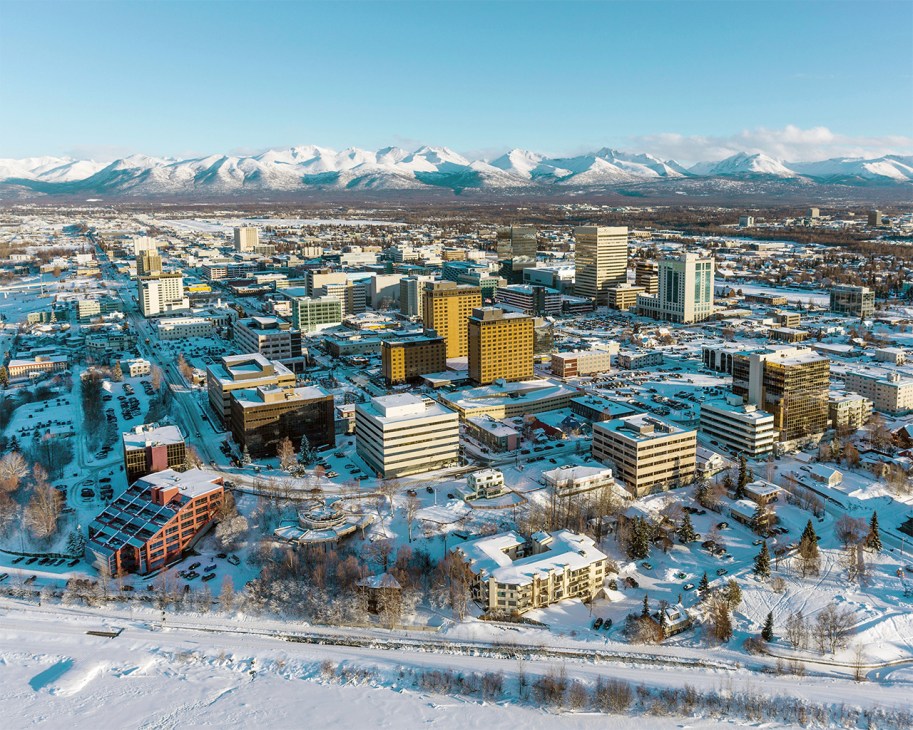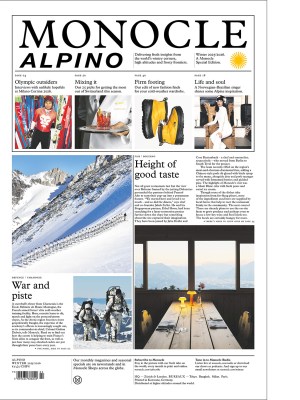If Alaska seeks diplomatic clout, it needs to build better venues
Alaska wants to host geopolitical get-togethers, but where?
The run-up to the tête-à-tête between Donald Trump and Vladimir Putin in Alaska begged the question: where? While the general co-ordinates were known – only Anchorage’s runways can accommodate both Air Force One and the Russian presidential plane – envoys from the US State Department and Russia’s Ministry of Foreign Affairs likely struggled to pin down an exact setting before settling on Joint Base Elmendorf-Richardson.
That’s because, to put it bluntly, Anchorage doesn’t inspire. The state’s largest city was levelled by a 9.2-magnitude earthquake in 1964 and was quickly rebuilt without grace. For starters, there’s only one marquee lodging property: Hotel Captain Cook. While the interior boasts some suitable nooks for hushed diplomatic chats and local touches convey a sense of place (try the reindeer sausage at breakfast), the property consists of a pair of uninspiring towers erected in the 1960s and 1970s.
The exclusive upper floors were deemed good enough for Barack Obama to spend the night there in 2015 and Xi Jinping to dine with leaders in 2017, while US and Chinese officials held testy talks there in 2021. The Captain Cook could work in a pinch for the Trump-Putin summit but it’s hardly the elegant Capella Singapore, where a plaque commemorates Trump and Kim Jong-un’s 2018 handshake.

Putin isn’t the first head of state to have been given the Alaskan hangar treatment. Richard Nixon greeted Emperor Hirohito at Elmendorf Air Base in 1971 and Ronald Reagan met Pope John Paul II at the Fairbanks Airport in 1984; both are further indications of a lack of suitable venues in Alaska. Trump and Putin could commandeer the recently renovated Alaska Airlines lounge at Ted Stevens International Airport for a quick in-and-out but such a makeshift solution would only further undercut the state’s diplomatic aspirations.
While much of the world puzzles over the choice of Alaska over rising mediating stars including Istanbul, Doha and Riyadh, the state champions its strategic geopolitical location as the US Arctic foothold. Newer buildings such as the Dena’ina Convention Center, designed by Seattle-based LMN, have boosted the profile of the annual Arctic Encounter Symposium that was held recently. But it’s hardly an architectural landmark akin to other hubs of diplomatic dialogue. Take Reykjavik’s Harpa Concert Hall, home to the Arctic Circle Assembly, or Tromsø’s Arctic Cathedral. Even David Chipperfield’s Anchorage Museum deserves praise.
Alaskan civic leaders need to build on these Arctic architectural legacies to make good on their conviction that the midpoint between North America and Eurasia could serve as the fulcrum for negotiations in the new era of great-power politics. That Russian and Chinese officials can travel there without crossing into foreign airspace is both practical and symbolic, given concerns about International Criminal Court jurisdiction and the desire to exclude European participation.
Plus, there’s powerful bilateral symbolism: Moscow sold the territory to the US in 1867 and maintains multiple Russian Orthodox religious buildings in Alaska as heritage sites. But whatever its period charms, Trump and Putin are unlikely to meet in a restored sod roof blockhouse built by the Russian-American Company in 1841 as a fur-trading outpost.
What world leaders need is a setting where inspiring design fosters healthy dialogue. In 1986, Reagan and Mikhail Gorbachev sat down in Reykjavik at Höfði, an intimate early-20th-century house, and began thawing the Cold War. Two years ago, Joe Biden and Xi Jinping strolled a bucolic country estate outside San Francisco, signalling a dialling down of Sino-American tensions.
Architects take note. Alaska needs a new blueprint for success: a cool, cosy enclave blending the best of Pacific Northwest modernism and contemporary Arctic design sensibilities that can elevate the state to a Geneva-on-the-Inlet. Today’s talks might be built on sand but, regardless, Anchorage falls short.
Gregory Scruggs is Monocle’s Seattle correspondent and has reported frequently from Alaska. For more opinion, analysis and insight, subscribe to Monocle today.



